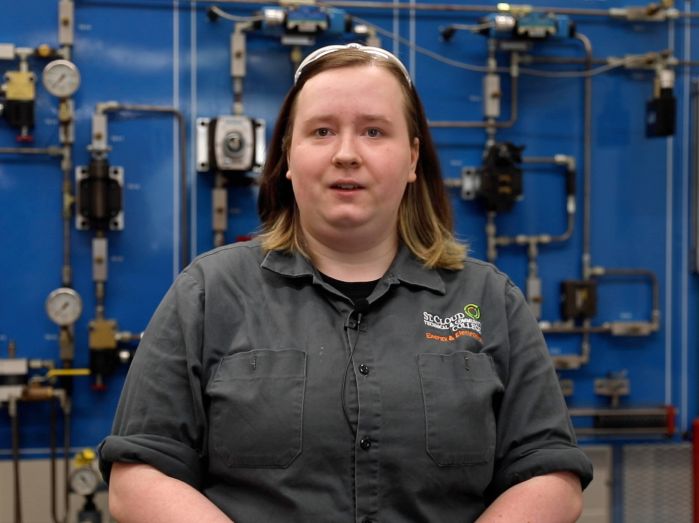
By Kate Wallace
The advice that Katrina Sandbakken has for anyone going into the Energy & Electronics program is practical and sensible: Fill out the FAFSA. You can’t be afraid of heights. Be prepared for heavy bags. Do your homework.
Practicality is no doubt part of the reason she decided to go into the program with a focus on two degrees: Instrumentation & Process Control and Energy Technical Specialist.
“I’m more of a hands-on person, so being able to physically do the wiring or adjusting parameters on a screen versus sitting on a computer all day or typing is much easier and I can remember it better,” Sandbakken explained.
And she is straight-forward in how she tackles her classes and decisions about her program. She started off with the Energy Technical Specialist degree option, but after learning how the classes overlap between the Energy & Electronics degrees, she opted into also working on the Instrumentation & Process Control AAS.
In the middle of a semester.
It wasn’t the most ideal, but Sandbakken is taking it in stride, even with her self-awareness that homework is her biggest struggle.
“My classes haven’t been too hard as long you remember to do your homework,” Sandbakken said. With double the classes, it can be hard to remember all the homework that she has.
In addition to the overlapping classes with the two degrees, having more than one increases her career opportunities after graduating. Sandbakken recommends that anyone going into the Energy & Electronics program get at least two degrees. “It makes you even more qualified to go into jobs in this field,” she explained.
Career opportunities are the main reason she ended up in this program and earning two degrees. She was interested in becoming an electrician, and while there is a lot in common between the two career fields, the jobs associated with the shift in energy efficiency are just right for graduates from the program. Plus, there’s a lot of variety with the field, more so than as an electrician, and that’s what she prefers for her future career.
Sandbakken’s down-to-earth approach doesn’t mean she isn’t enjoying her time at SCTCC. She had been to the SCTCC campus even before high school, and she’s always liked it. She’s enjoying her classes, having a lot of fun, and likes her instructors. It may take a little bit more time to finish two AAS degrees instead of one, but she knows it will pay off after she graduates.
But really, her biggest piece of advice is to fill out the FAFSA. Practicality and fun can co-exist!